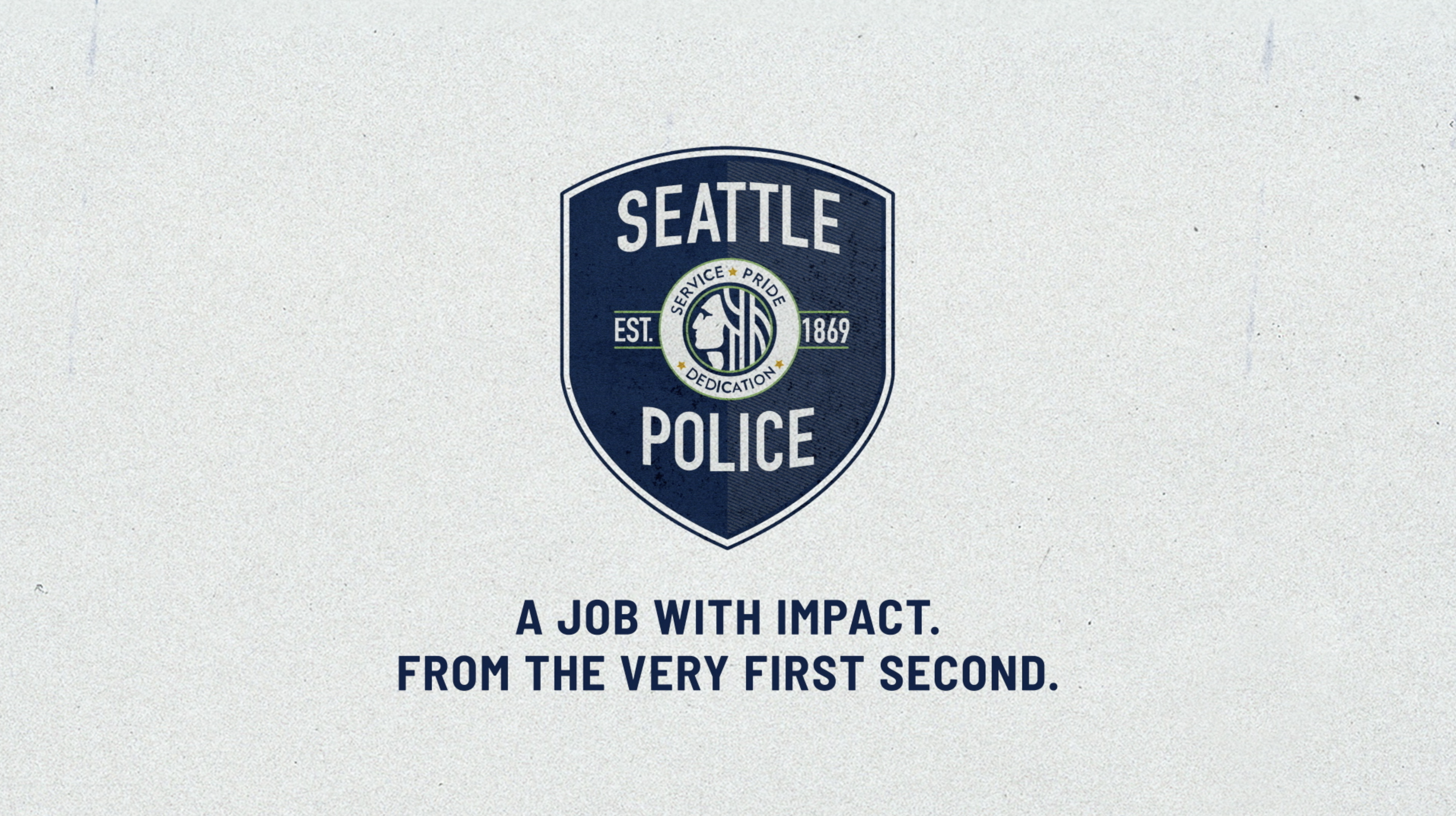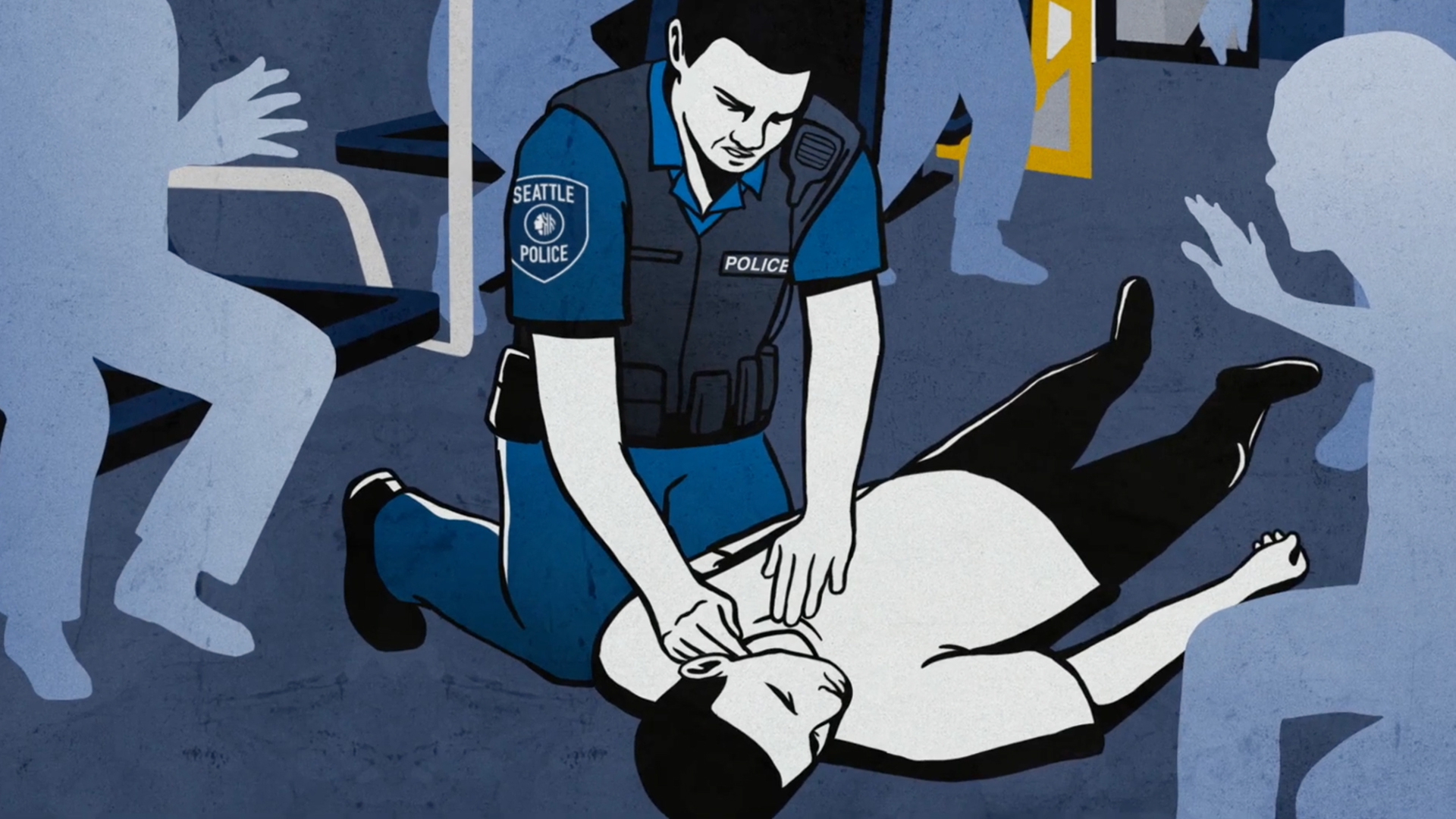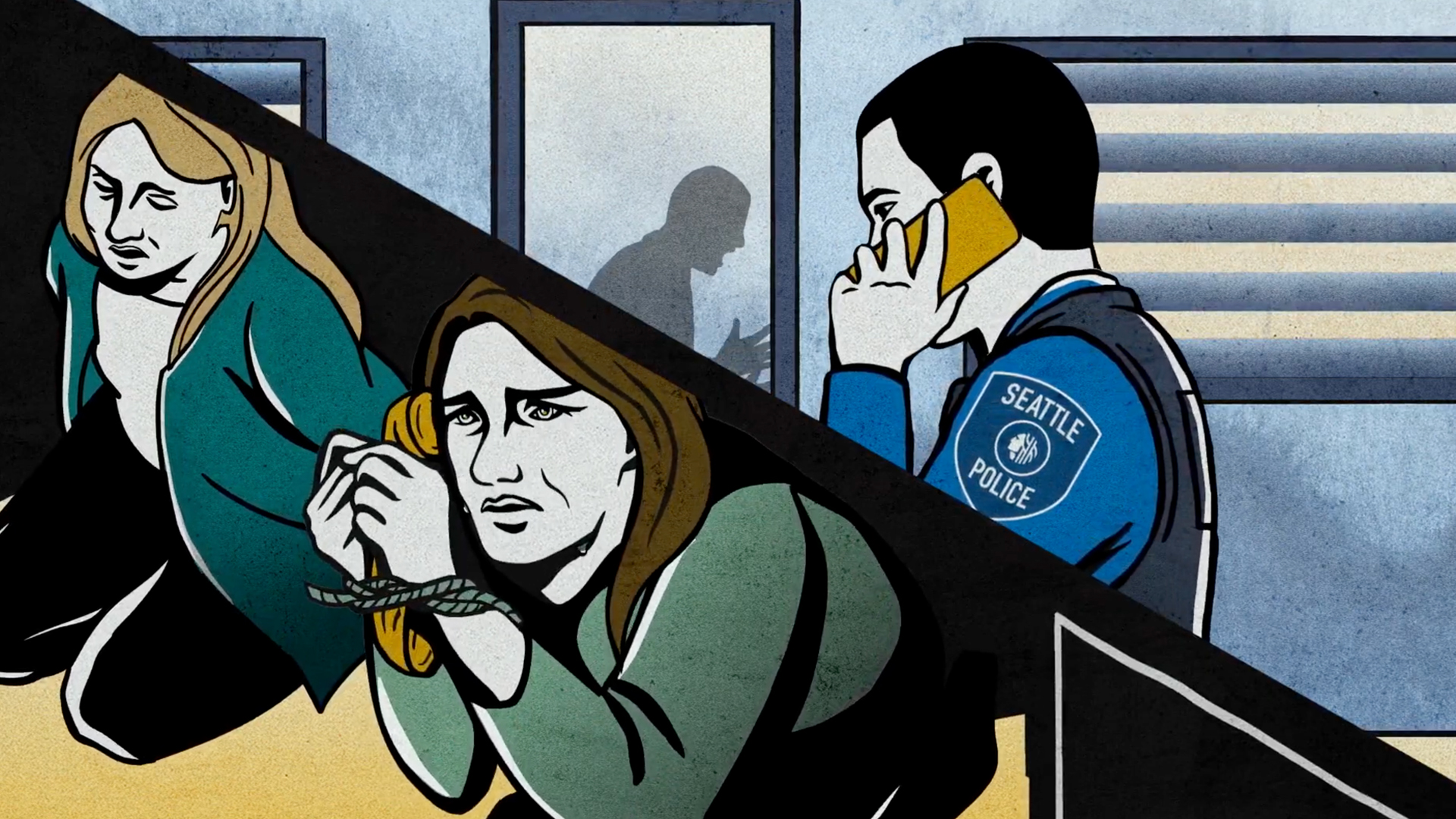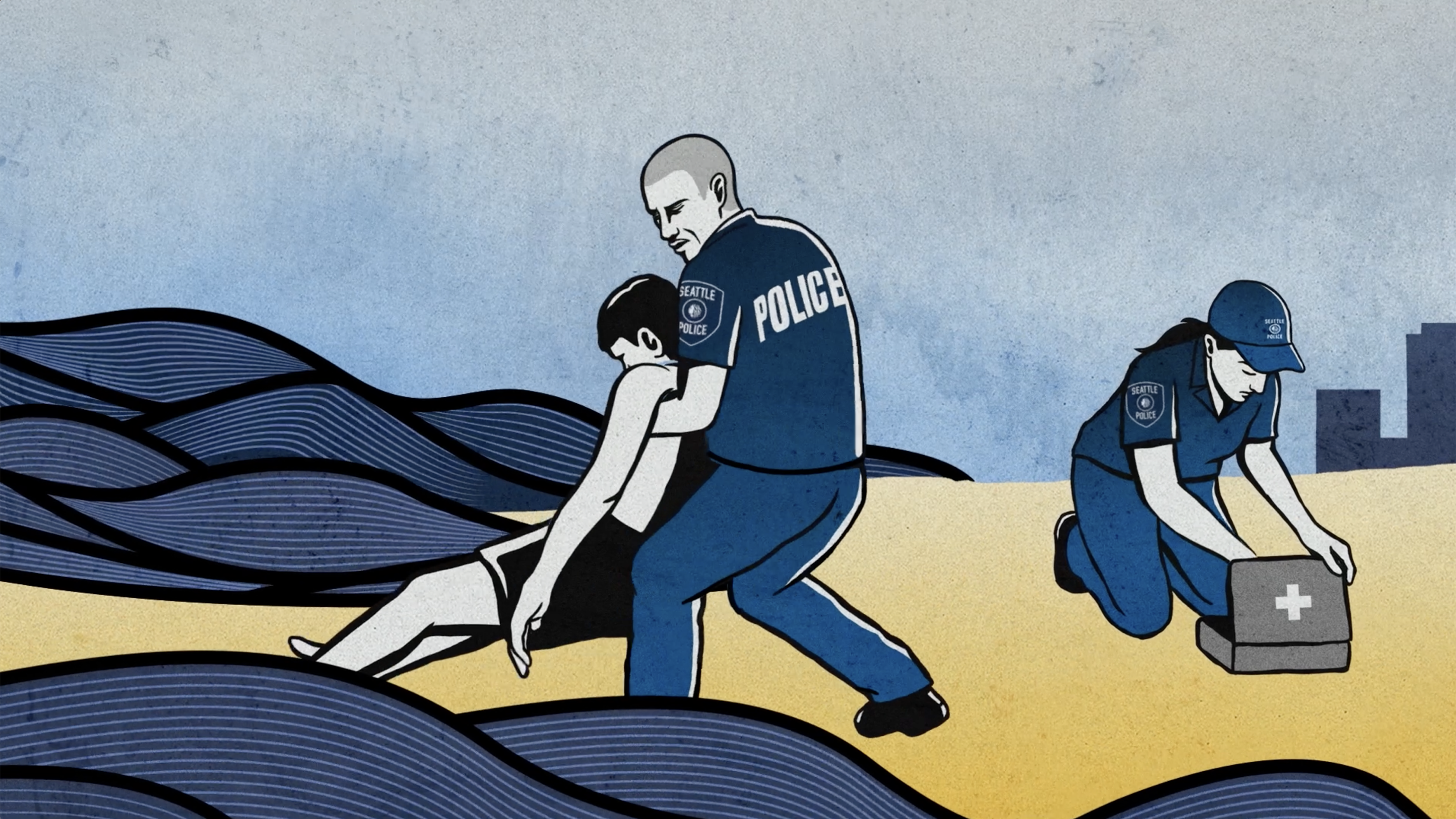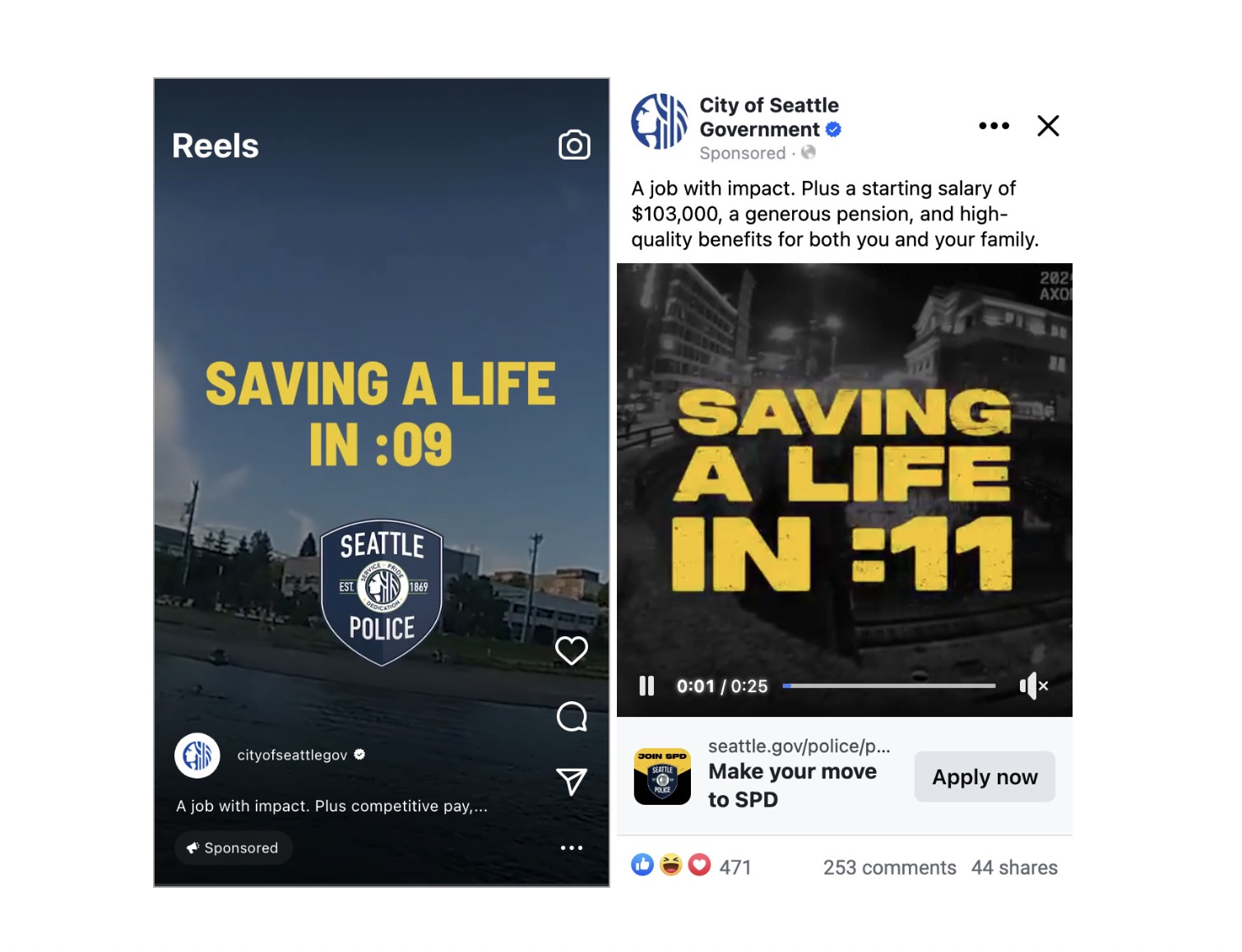

In the wake of a nationwide policing recruitment crisis, the Seattle Police Department faced one of the most urgent staffing shortages in the country. Officer numbers had dropped to critical lows, overburdening existing staff, lengthening response times, and eroding community trust. For the sake of public safety, the SPD needed to attract more applicants as quickly as humanly possible.
The city’s need for an image overhaul of what an SPD officer looks like was truly urgent. Everyone has a stereotypical view of what it means to be a cop and what they do every day. And as a result, few considering their next career move see “police officer” when they look in the mirror.
We needed to help change those perceptions.
We began by identifying two priority audiences.
The creative showcased the variety of ways Seattle police officers can make a positive daily impact on their communities, with a key messaging takeaway:
A JOB WITH IMPACT. FROM THE VERY FIRST SECOND.
We defined our full-funnel media campaign as follows:
The key creative tentpole component of the campaign was All Clear – Stories of the Seattle Police Department, a long-form animated video series that resonated deeply with audiences on platforms they were already engaging on. Structured in the style of a true crime series, each episode took a cinematic approach to real SPD cases, delivering high-stakes narratives that revealed the humanity, bravery, and impact behind the badge. The series featured three episodes, each with a different SPD specialty officer and case. “The Rescue” followed a Harbor Patrol officer’s effort to save a drowning man. “The Negotiation” focused on a Crisis Response officer managing a tense hostage situation, while “First on the Scene” depicted a new Patrol officer saving an overdose victim. The series was distributed on YouTube and Meta, and supported by shorter teasers and audio narratives, including placements on popular true-crime podcasts, meeting audiences where they naturally engage with this genre.
Beyond All Clear, other social ads focused on driving applications featured authentic bodycam footage and time-stamped “officer impact stories” to lend both authenticity and a sense of the real difference officers can make on a daily basis. These ads were tailored to each channel: 1x1 videos for Meta and LinkedIn feed placements and 9x16 videos for Meta’s Stories/Reels to take full advantage of the vertical user experience. Paid search was also a huge cornerstone of our strategy, capturing low-funnel intent around job searching and lateral transfers via search ads featuring action-oriented language. For targeting, always-on campaigns across Meta layered on interests for jobs and career hunting, while on LinkedIn, we utilized degree, interest, job title, and industry targeting.
One of the biggest challenges we faced throughout the campaign was balancing the creative preferences of two key stakeholders: the City of Seattle and the Seattle Police Department. At times, their perspectives on the tone of the ads diverged. We navigated this by rooting recommendations in actual performance data rather than opinion, and our media plan evolved as we applied learnings from creative performance in real time.
Our integrated campaign for the Seattle Police Department achieved unprecedented results, proving that purpose-driven storytelling can be a powerful recruiting tool.
The brand-level All Clear ads generated over 26 million impressions and 7.3 million video views, while our always on, application-focused, media delivered 63 million impressions and 1.48 million clicks, generating 950,000 website sessions—nearly 82% of total traffic to SPD’s recruitment site.
YOY, the campaign led to an overall 244% increase in daily officer applications and 242% increase in visits to SPDjobs.com.
Today, new officer applications are currently the highest they have been in the past decade.
As of July 2025, officer hires are on pace to reach close to 200 by the end of the year, more than doubling from the 84 hired in 2024. This represents an estimated headcount close to 90% of pre-pandemic levels by the end of the year. These real-world results demonstrate the impact of the campaign, and shows a department no longer in crisis, but trending towards a position of promise.
